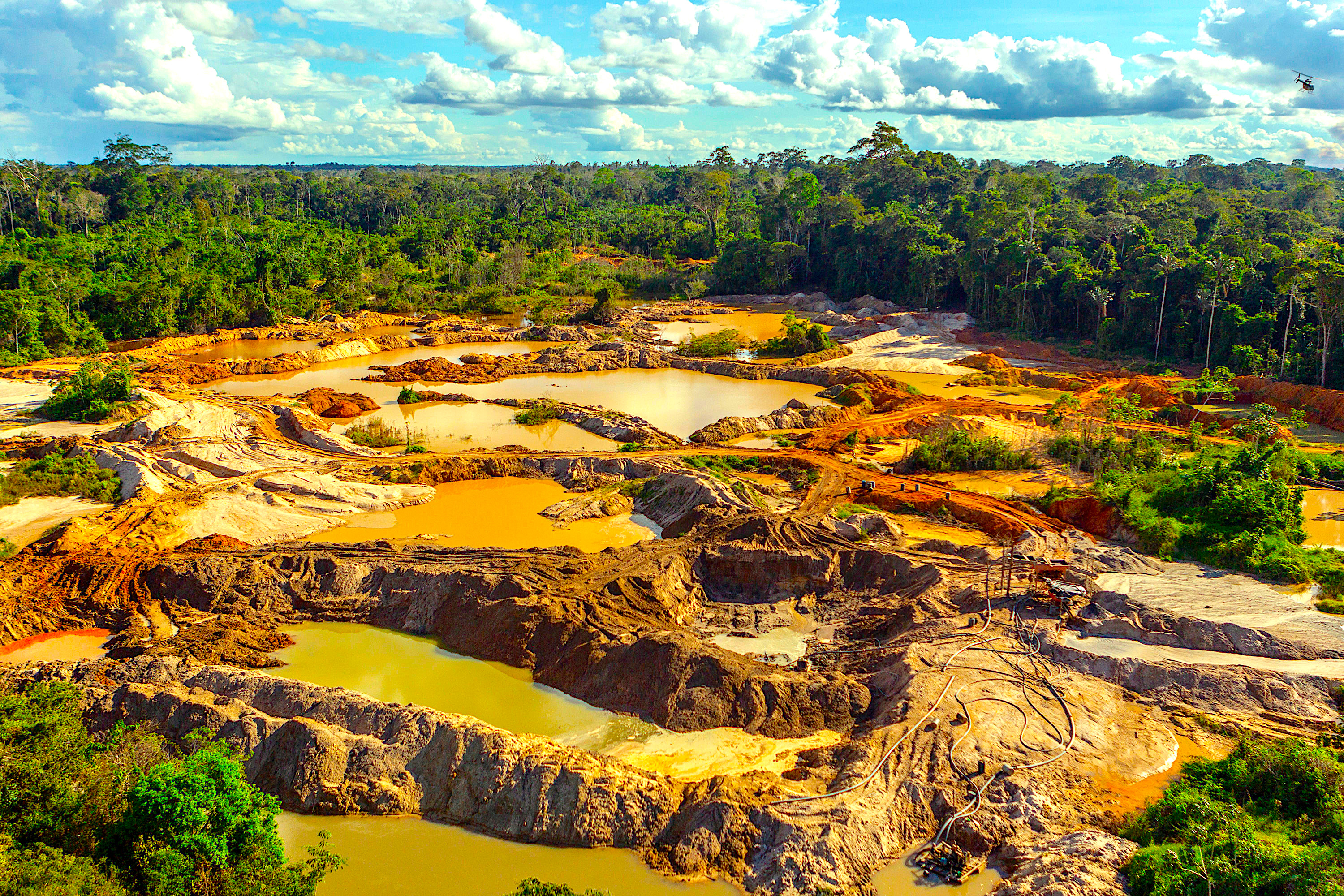In 2019, the Amazon forest burst into flames, spreading smoke and ash across a wide area and turning the world's attention back to this vital global resource. But right-wing Brazilian President Jair Bolsonaro announced that he would continue his plans to open up the forest for more logging, mining, and agriculture. This month, historian Stanley Blake sketches the long struggle over the Amazon between indigenous peoples and those Brazilians who see it as the key to Brazil's economic future.
On August 21, 2019, #PrayForAmazonas became the top trending hashtag on Twitter after the combination of smoke from Amazon forest fires, a weather front, and pollution caused skies to darken in the middle of the afternoon in Brazil’s metropolis of São Paulo, hundreds of miles from the Amazon fires.

International attention focused on the fires, the majority of which deliberately had been started to clear forest for cattle ranching and agriculture. Official Brazilian government data indicated that 73,000 fires had been set in the Amazon during the first eight months of 2019, an 84%increase over the previous year’s total.
The government of Brazilian President Jair Bolsonaro downplayed the fires and continued emphasizing economic development over environmental and climate concerns.
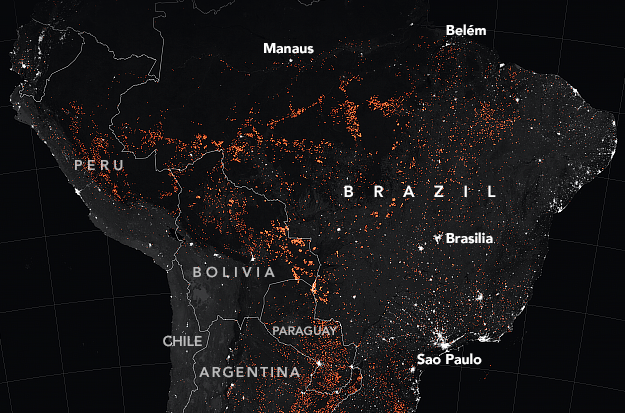
On August 1, Bolsonaro fired Ricardo Galvão, the director of INPE, Brazil’s National Institute for Space Research, who defended the institute’s use of satellite imaging to compile data about the fires. INPE determined that 4,500 square kilometers of Amazon forest had been cleared in 2019, a 60%increase over the same period in 2018, and the highest total in 10 years.
In the face of a torrent of international criticism, Bolsonaro blamed NGOs and environmentalists for starting the fires, allegedly to attract attention, while his foreign minister suggested that Marxists, environmentalists, and indigenous rights activists were responsible. The Bolsonaro administration stated that it did not have the material resources to fight the fires, concluding that there was little it could do.
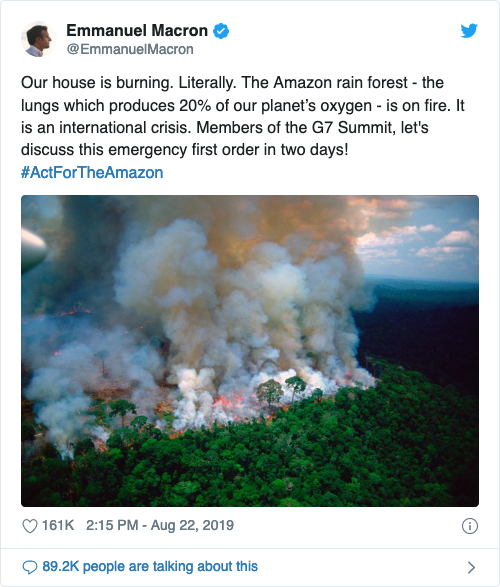
August 22, 2019 tweet by French President Emmanuel Macron.
At the G7 summit in Biarritz, France in late August, European nations offered Brazil $20 million to assist firefighting and reforestation efforts. Bolsonaro rejected the offers and suggested that Angela Merkel keep the money and “reforest Germany instead” while his chief of staff stated that “[Emmanuel] Macron can’t even prevent a predictable fire in a church that is a World Heritage Site and wants to teach us what exactly?”
The Bolsonaro administration’s pointed rejection of assistance revealed not only his right-wing populism and his willingness to stoke nationalist sentiments among his supporters, but also an approach to the Amazon that embraces unchecked economic development and runs counter to global concerns about the environment and climate change.
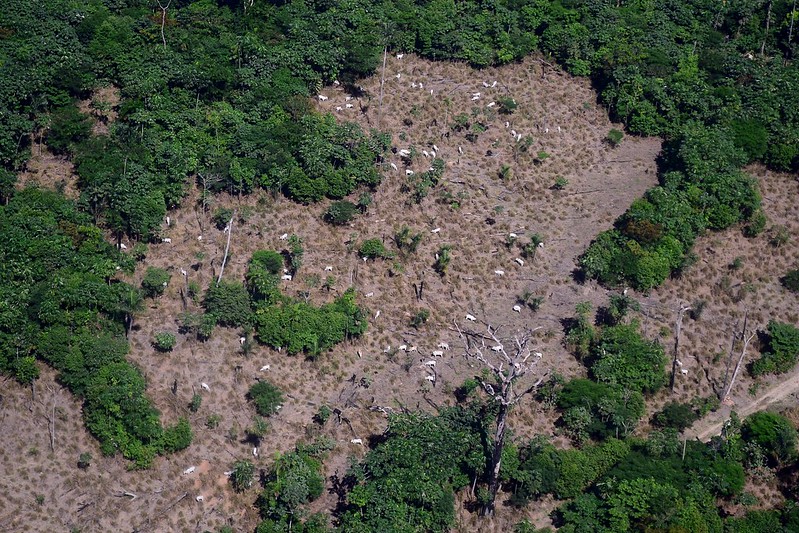
Cattle herd grazing near the rainforest in 2014 in Pará, Brazil.
The deforestation of the Amazon has global implications. If current rates of loss continue, approximately a quarter of the region will be treeless by 2030 and conversion from forest to savanna will accelerate. Such deforestation would affect global atmospheric and oceanic carbon levels because the Amazon would no longer act as a carbon sink. The disappearance of the rainforest also threatens the region’s indigenous peoples with a loss of ancestral lands and livelihood and native species with habitat loss and localized extinction.
To understand the fires in the Amazon and the Bolsonaro government’s indifference, it is essential to understand the history of the human presence in the region and the ways in which in-migration and settlement, economic development, and government policies have led to the transformation of the Amazon.
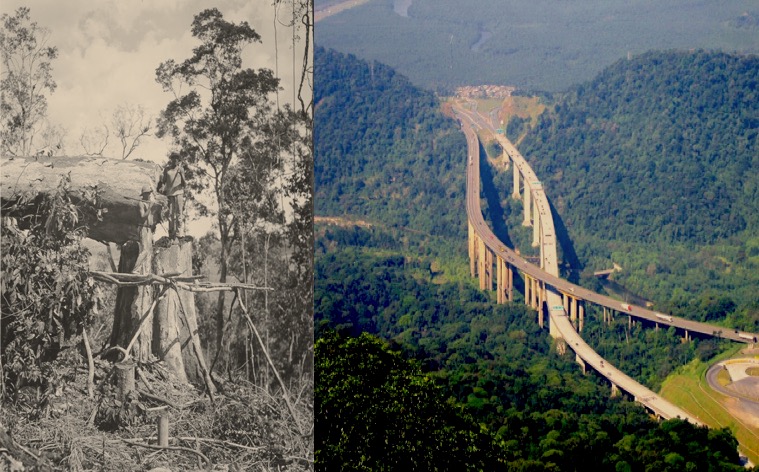
Two axmen cutting timber in Fordlandia in 1931 (left). The Immigrant Highway was constructed in 1974 in the state of São Paulo, Brazil (right).
Against this backdrop, Bolsonaro’s policies are nothing new, but rather a continuation of 500 years of efforts to colonize and develop the region.
The Amazon and its People
First, however, let’s make it clear exactly what we mean when we use the term “the Amazon.”
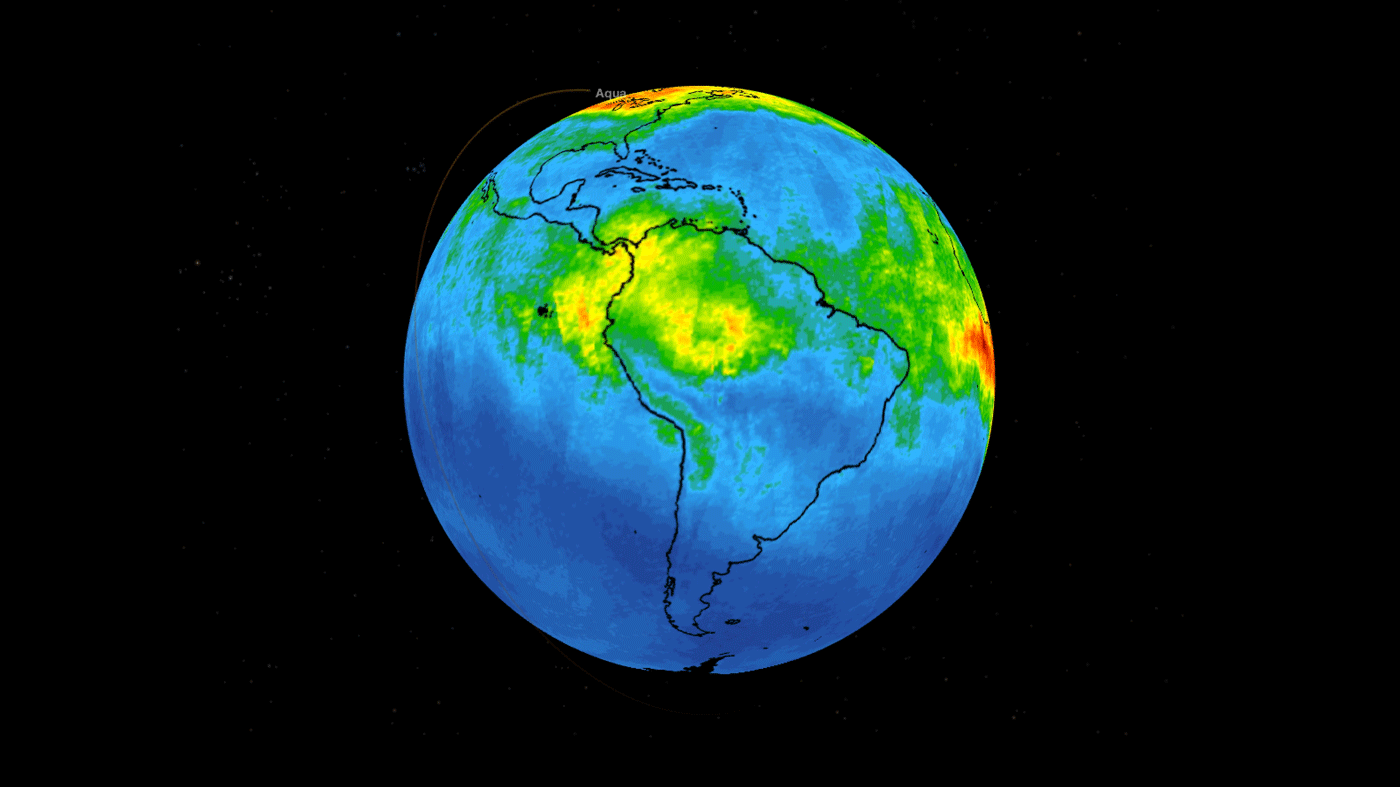
An animated NASA map shows carbon monoxide produced by Amazon basin fires from August 8-22, 2019.
In geographic terms, the Amazon is defined as the hydrographic basin drained by the Amazon river and its tributaries. The region encompasses 2.6 million square miles, approximately equivalent in size to the entire continental United States west of the Mississippi river. The Amazon basin comprises 40% of the South American continent and 60% of Brazilian national territory.
The Amazon forest is home to approximately 10% of all species on the planet, an astonishing diversity. It is estimated that one in five bird species live in the Amazon, and one square kilometer of Ecuadorian forest was found to contain more than 1,000 plant species.
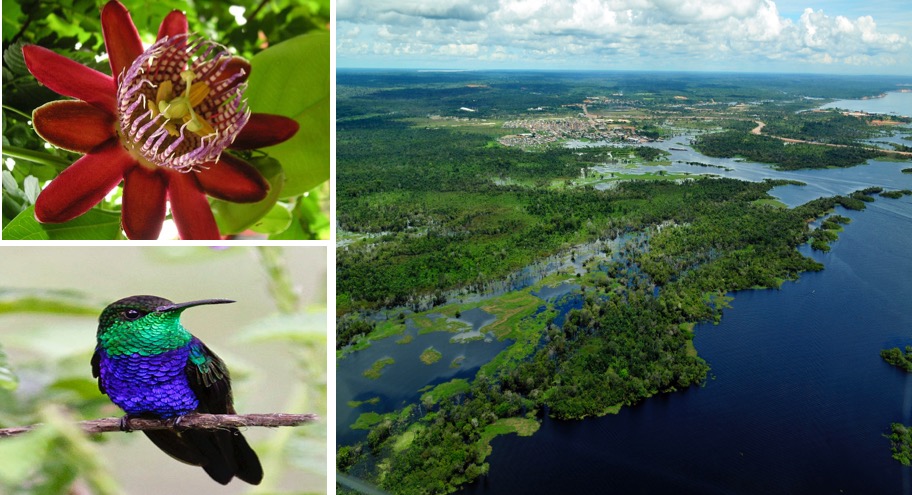
The winged-stem passion flower is a native Amazon vine (top left). A hummingbird species, the fork-tailed woodnymph’s habitat is tropical (bottom left). A 2011 aerial view of the Amazon rainforest near Manaus, Brazil (right).
The Amazon river is the world’s longest at 4,300 miles, and it and its tributaries contain 20% of the planet’s fresh water. About 60% of the Amazon basin lies within Brazil, 13% in Peru, 8% in Bolivia, 7% in Colombia, and 6% in Venezuela, with the remainder in Guyana, Suriname, French Guiana, and Ecuador.
In 1953 the Brazilian federal government defined the “legal Amazon” as encompassing the Brazilian states of Amazonas, Pará, Roraima, Rondônia, Acre, and Amapá, as well as parts of the states of Maranhão, Mato Grosso, and Tocantins, approximately 1.94 million square miles. The population of the legal Amazon is 18.4 million people, and while overall it has a low population density, it also contains several large urban areas, the largest of which are Manaus at 2.6 million and Belém at 2.5 million.
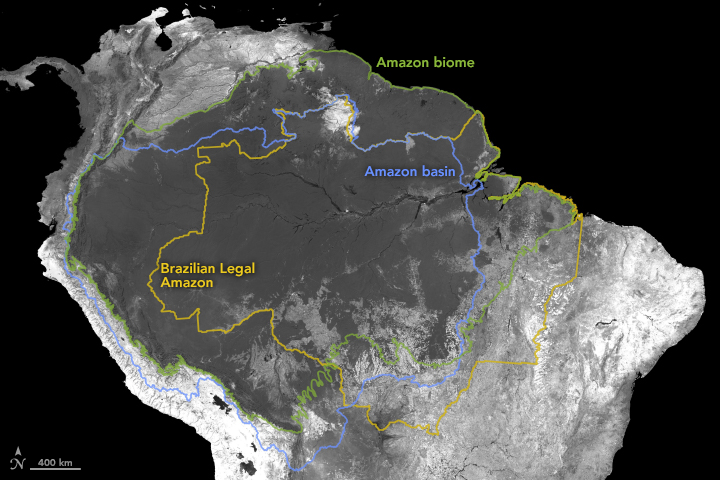
The term “the Amazon” generally refers either to the Amazon basin, with territory in several Latin American nations, or the Brazilian geographic designation.
Humans have inhabited the Amazon basin for millennia.
Evidence of human presence at the Caverna da Pedra Pintada (Cavern of the Painted Rock) site in Pará dates to 10,000 to 11,200 years ago, while in nearby Piauí, the Pedra Furada (Pierced Rock) site has cave paintings and stone tools dated to 12,000 years ago, and charcoal from man-made fires dated to between 32,000 and 48,000 years ago, although the oldest dates are not accepted by all archaeologists.
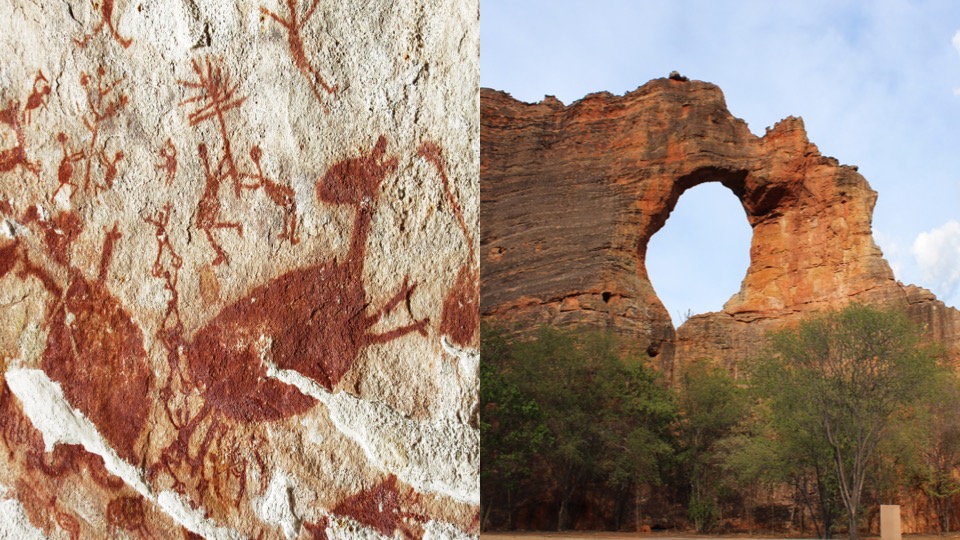
Pedra Furada rock painting in Piauí, Brazil, dated to 12,000 years ago (left). Pierced Rock site in Serra da Capivara Park (right).
Recent work at several sites has revealed evidence of large, complex societies and has challenged the long-accepted theory that prior to European colonization Brazilian native peoples lived only in small groups. Estimates of the native population of the Amazon prior to European colonization range from 4 to 5 million, of which some 3 million were located in what is today Brazil.
Portuguese explorers arrived on the Atlantic coast of Brazil and initiated contact with native Brazilians in 1500. However, the exploration and settlement of the Amazon basin took considerably longer. For both the Spanish and the Portuguese the region had no large civilizations and seemingly no natural resources that could be exploited. The lure of conquest led the Spanish to focus on the Andean region and led the Portuguese to hold their colonies on Brazil’s Atlantic coast.
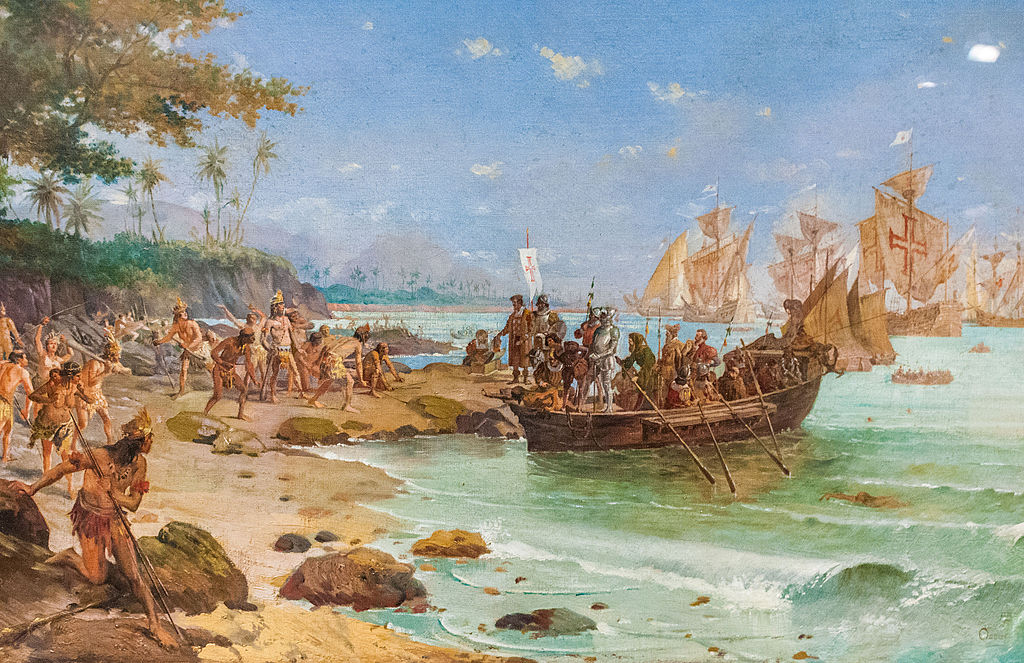
European explorers and adventurers, including Amerigo Vespucci, Francisco de Orellana, Lope de Aguirre, and Pedro Teixeira, led expeditions up and down the Amazon in the 16th and 17th centuries. The Spanish legend of El Dorado—a mythical Muisca chief who, in an initiation rite, covered himself in gold dust—as well as competition between Spain and Portugal, and later involving England and the Netherlands, drove early exploration and settlement.
A permanent Portuguese presence was not established until the 17th century with forts and settlements at Belém near the mouth of the Amazon in 1616 and at Manaus at the confluence of the Rio Negro and Amazon rivers in 1669.
The purpose of the Portuguese presence was twofold: to claim territory that by treaty fell under Spanish rule, and to exploit natural resources called drogas do sertão (drugs of the interior): botanicals including flowers, fruits, seeds, and nuts, and lumber.

The region’s poor soil made cultivation of export crops such as sugar and coffee difficult, and the region’s remoteness and lack of capital made the importation of enslaved Africans prohibitively expensive. Early Portuguese colonization centered on using forced indigenous labor to collect and export the bounty of the forest.
The Portuguese Crown developed two approaches toward the indigenous populations of Brazil. According to the principles of a “just war,” natives who resisted or rejected Portuguese authority were enslaved and subjected to labor demands, gathering drogas do sertão and working on plantations.
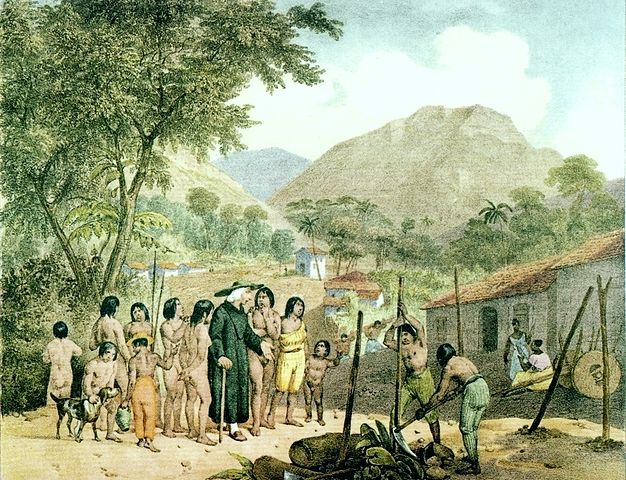
Johann Moritz Rugendas’ painting of a Christianized Tapuyos Indian village, Brazil c. 1825.
Natives who assented to Portuguese authority were relocated to aldeias, native villages overseen by Catholic religious orders, where they received religious instruction and worked on agricultural plantations.
The Crown, under pressure from the Jesuits and the Catholic Church, outlawed Indian slavery except in the case of a “just war.” Nevertheless, the practice of enslaving natives continued well into the 1700s. Slave catching expeditions supplied plantation owners with native laborers, including on Atlantic coast sugar mills. The Portuguese Crown finally abolished Indian slavery in 1757.
Mistreatment and enslavement led to a sharp decline in the native population even though early European explorers’ chronicles described dense populations and almost continuous settlement along the lower Amazon. Neither enslavement nor relocation to a Jesuit aldeia left the indigenous peoples to their own devices.
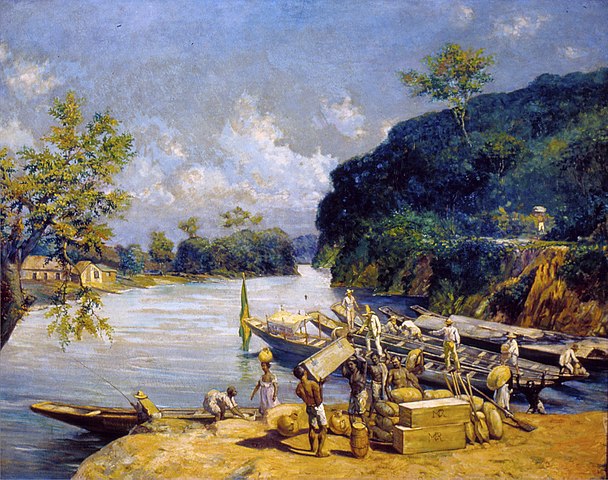
A 1920 da Silva painting representing enslaved laborers in Brazil.
From the Portuguese perspective, the indigenous peoples of Brazil’s Amazon, in either case, were to become subjects, Catholics, and laborers.
Indigenous People and the Modern Nation
This attitude toward the native populations of the Amazon and efforts at resource extraction continued into the 20th century.
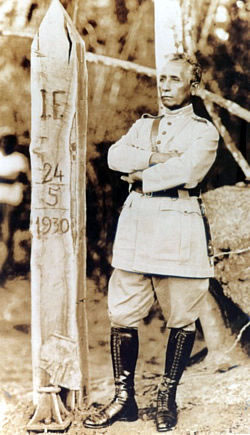
Marechal Cândido Rondon, a Positivist army officer and engineer who led government exploration and development efforts in the region starting in the 1890s, was instrumental in the creation of the federal government’s Indian Protection Service (SPI) in 1910. Rondon believed that Indians were to be brought under control of the state and made into modern, productive citizens.
SPI officials concentrated on the “pacification” of indigenous peoples. While the right to occupy traditional lands was legally recognized, corruption, patronage, and bureaucracy meant that indigenous peoples of the Amazon did not often benefit from protections that existed in Brazilian law.
The expansion of government-backed development projects in the 1960s led to increased pressure on Brazil’s indigenous peoples. In 1961 the Brazilian federal government created the Xingu Indigenous Park in the state of Mato Grosso, the first federal reserve for indigenous people. It included a territory of approximately 10,000 square miles containing at least 16 native groups, most sharing a common cultural system.
In 1967 the Brazilian military government decommissioned the SPI and created the National Indian Foundation (FUNAI), which oversees the administration of indigenous peoples, approximately 305 tribal groups and 700 indigenous territories that collectively comprise 13% of Brazilian national territory.
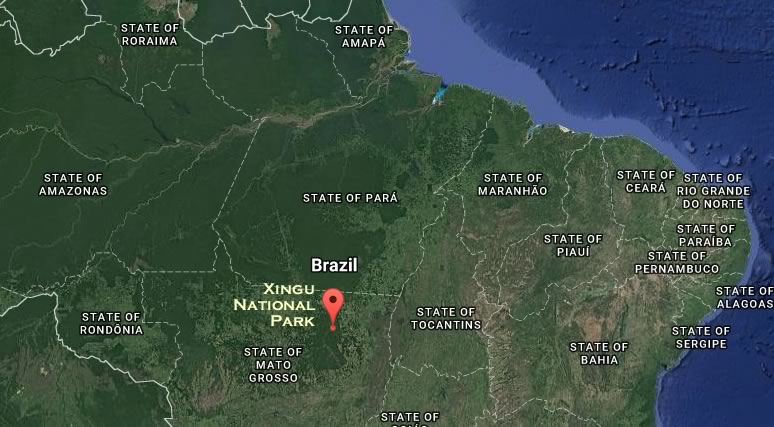
Xingu Indigenous Park location in 2016.
The Brazilian constitution of 1988 recognized the right of indigenous peoples to exist without being forced to integrate into modern society as well as their right to occupy traditional lands.
While these legal protections have been essential for the survival of native Brazilians, pressures on land from ranching, agriculture, and mining diminished the native population through the 20th century.
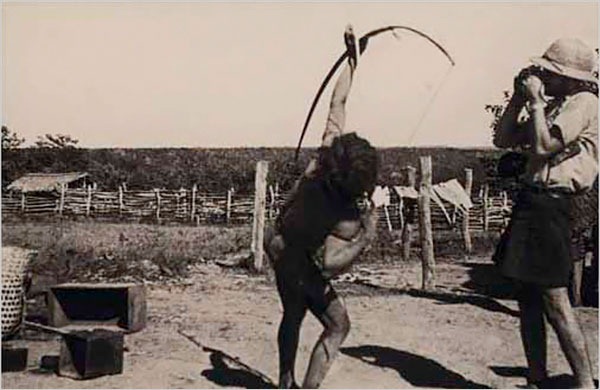
Claude Lévi-Strauss photographing a Brazilian native in the 1930s.
Brazilian anthropologist Darcy Ribeiro estimated that between 1900 and 1957 some 80 Indian tribes had been destroyed, and the number of Nambikwara, studied by French anthropologist Claude Lévi-Strauss, had been reduced from 20,000 to 650 over the course of the 20th century.
The Bolsonaro administration views Brazil’s indigenous peoples as an impediment to economic development. Bolsonaro has threatened to dismantle FUNAI and has stated that agrobusiness and mining interests are more important than the protection of indigenous peoples. In response to the Bolsonaro administration’s policies, experts on Brazil’s indigenous peoples have written an open letter that warns that a “genocide is underway” against uncontacted indigenous peoples.
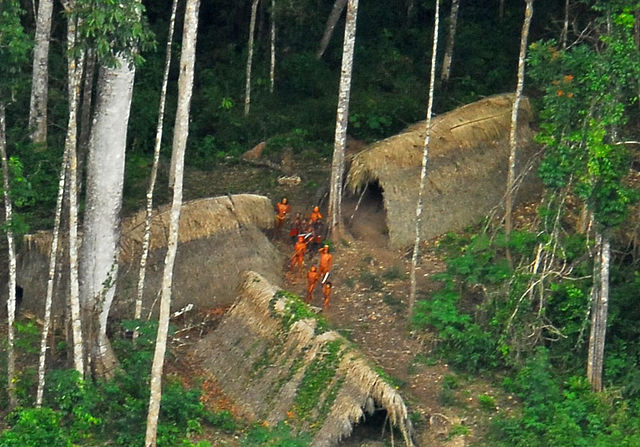
Uncontacted indigenous tribe in Acre, Brazil, in 2009.
Both the Amazon forest and indigenous peoples are threatened by the Bolsonaro government’s developmentalist policies.
Rubber and the Amazon: A Resource Bonanza
In the second half of the 19th century the region became increasingly integrated into the global economy.
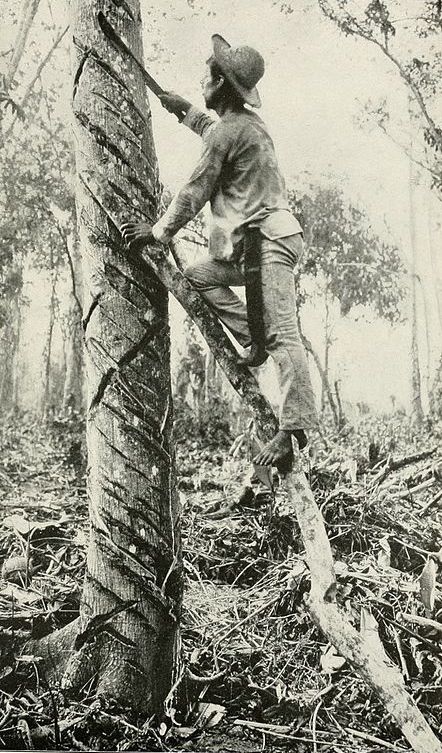
After Charles Goodyear developed the process to vulcanize rubber, the Amazon became the world’s leading producer of natural rubber, made from the sap of the Hevea brasiliensis tree, which grows in the forest. Spurred by demand for boots, raincoats, bicycle tires, and eventually automobile tires, by 1890 Brazil accounted for 90% of rubber production globally.
Rubber tappers, including native Brazilians, caboclos (assimilated natives or those of mixed descent), and migrants from northeastern Brazil, collected sap and processed the latex for export. Poorly compensated, they were usually paid in goods or credit rather than cash and became indebted to rubber brokers and landowners.
Rubber exports created fortunes for rubber barons and contributed to the rapid development Belém and Manaus, which by the late 19th century boasted electric street lighting, granite-paved streets, electric streetcar lines, monuments, parks, and, improbably, in Manaus, the Beaux-Arts Teatro Amazonas, an opera house constructed with imported French tile, steel from Glasgow, and Italian marble. In 1900 the populations of Manaus reached 50,000 and Belém 90,000.
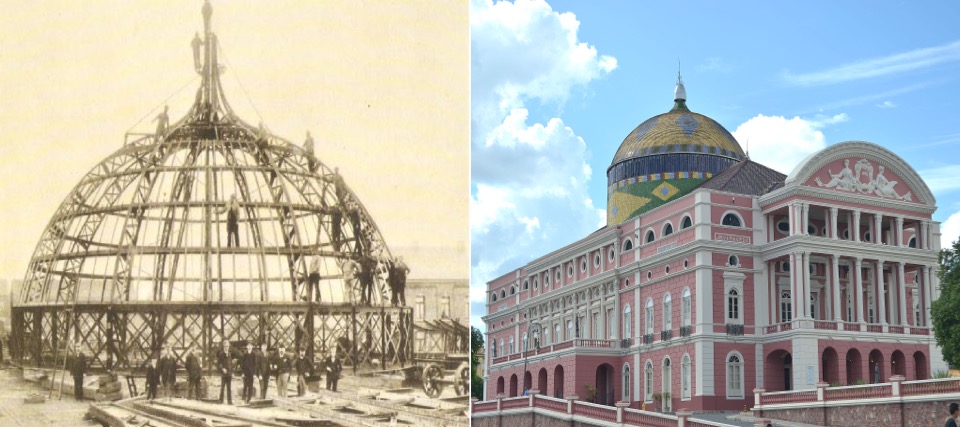
Dome of the Amazon Theater (Teatro Amazonas) under construction between 1880 and 1890 (left). Amazon Theater in 2013 (right).
The rubber boom was short-lived, however. In 1876 an English explorer smuggled Hevea seeds to London, and the British established plantations in Asia where they produced rubber at one-fourth the cost as in Brazil, thanks to rationalization and lower labor costs. By the 1930s Amazon produced less than one percent of the world’s rubber. The rubber boom was over.
Rubber nevertheless revealed the economic potential of the region, and in the 1890s the newly established Brazilian republic began to take an active interest in developing the region. Diplomat José Maria da Silva Paranhos Júnior, the Barão do Rio Branco, acquired territory from Argentina, Bolivia, Peru, Colombia, French Guiana, and British Guiana, the majority of which was located in the Amazon, adding 342,000 square miles to national territory.
Possessing territory required developing it.
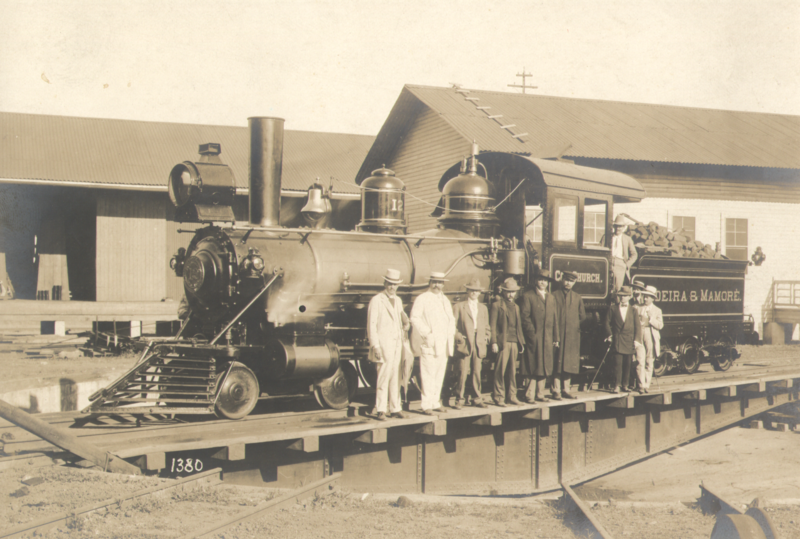
The Madeira-Mamoré Railroad built between 1907 and 1912 in Guaporé, Brazil.
Marechal Cândido Rondon led numerous expeditions through unexplored territory in the western Amazon basin and oversaw the construction of the region’s first telegraph lines and roads, including a road connecting Cuiabá, Mato Grosso to Rio de Janeiro, the nation’s capital. Rondon’s efforts were the first step in opening the region to settlement and development. In 1956, the state of Guaporé, which borders Bolivia, was renamed Rondônia in recognition of his efforts.
The Amazon fascinated and vexed foreigners well into the 20th century.
From 1913 to 1914 the Rondon-Roosevelt Scientific Expedition, headed by Rondon and former President Theodore Roosevelt, explored and mapped the “River of Doubt” (now named the Rio Roosevelt) discovered by Rondon in 1909.
The expedition was a disaster. One expedition member murdered another, one member drowned, and Roosevelt suffered a gash on his leg that became infected and left him unable to walk. Combined with a recurrence of malaria and short rations, he lost 50 pounds and contemplated suicide.
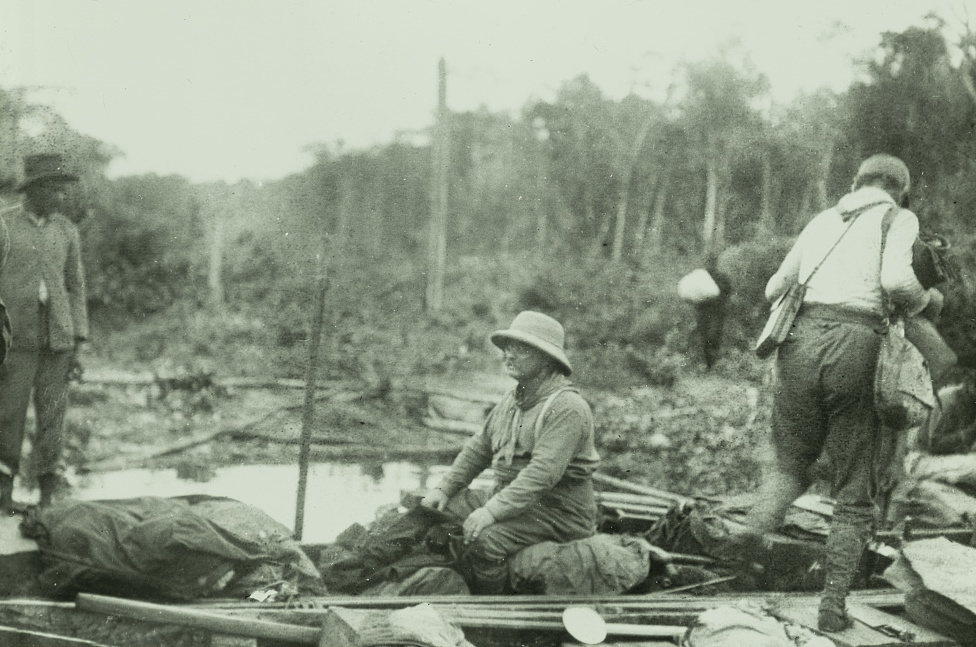
In 1925 British explorer Percy Fawcett was killed by natives on an ill-fated expedition to find what he believed was a lost civilization in the remote jungle of Mato Grosso.
In 1928 Henry Ford purchased a 3,900-square-mile tract (twice the size of Delaware) on the Tapajós river in Pará for a rubber plantation to supply his U.S. factories. By 1929 the modestly named Fordlandia employed 1,300.
At Ford’s insistence, workers and managers lived in a model village with strict prohibitions against tobacco, alcohol, women, and even soccer. Workers simply went to bars and brothels in nearby villages.
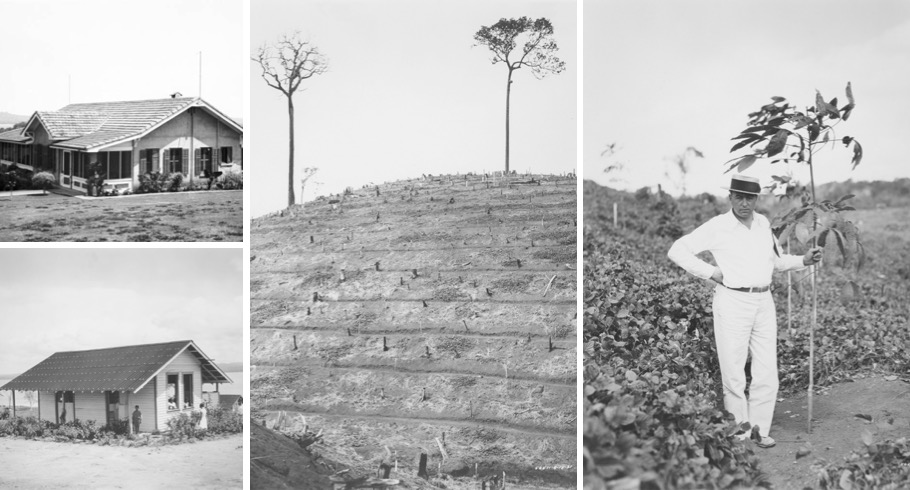
The Johnson house in Fordlandia in 1935 (top left). Plantation laborer’s house (bottom left). Fordlandia terraced hillside in 1931 (center). In 1931, John Rogge, assistant manager at Fordlandia, holds a one-year old rubber tree (right).
Managers struggled to find and keep workers on the payroll. Mismanagement, workers’ protests, competition from Asian-produced rubber, the global depression, leaf blight, and insects drove Ford from Fordlandia in 1934.
Rubber production was shifted downriver to a new site located closer to Santarém, but the same economic forces and development of synthetic rubber in the 1940s forced Ford to leave the Amazon in 1945.
“March to the West”: The Amazon’s Economic Development
In the 1930s Brazilian President Getúlio Vargas articulated a vision of the nation’s future dubbed the “March to the West” and proposed that the Amazon be developed to its full social and economic potential.
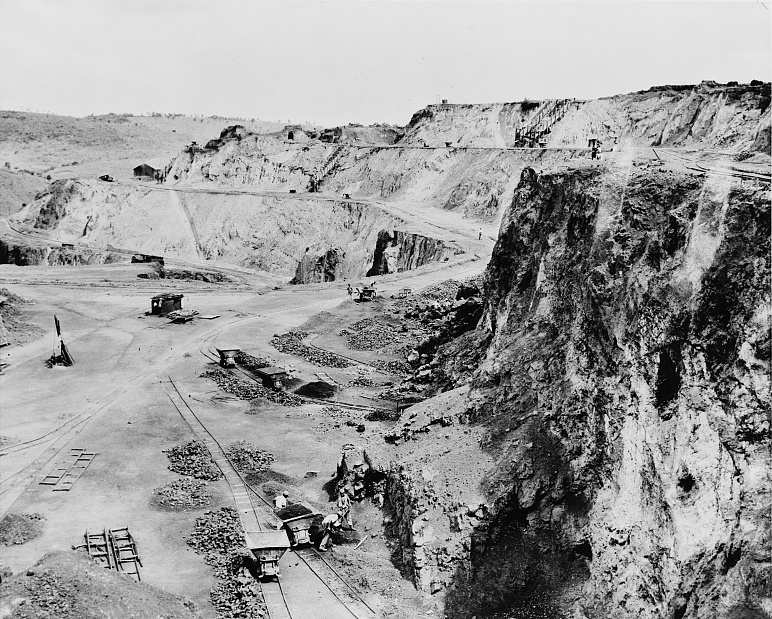
A Brazilian magnesium mine in 1940.
Vargas initiated a number of development programs that focused on the revitalization of rubber production, the relocation of impoverished farmers and workers from northeastern Brazil, and the development of transportation networks, mostly roads, linking the Amazon with the rest of the nation.
The start of World War II met with increasing U.S. interest in the Amazon’s resources, not only rubber, but also mineral resources essential to the Allied war effort. The Brazilian federal government recruited and relocated 55,000 “rubber soldiers” who also received payment from the U.S. government to revitalize rubber production during the war.

Vintage poster created between 1930 and 1950 by Brazil’s National Department of Coffee.
In 1946 the Brazilian federal government stipulated that 3% of all federal revenue was to be channeled into economic development programs in the Amazon. In 1953, the Vargas government created an economic development agency for the Amazon (SPVEA) that oversaw economic development projects including agriculture, ranching, mining, industry, transportation, energy, and finance.
In 1960 the Brazilian capital was relocated to Brasília, situated on a high plain to the east of the Amazon basin, partially fulfilling Vargas’ promised “March to the West.”
The military dictatorship that ruled Brazil from 1964 to 1985 oversaw a massive expansion of economic development in the region. The projects put in place by military generals were predicated on a doctrine of national security that emphasized the integration of the nation through the settlement and development of the Amazon.

A new regional development agency (SUDAM) was created in 1966 to oversee programs and the federal government spent nearly $2 billion over the next five years on road construction, energy, and resource development in the region.
A 1966 law stipulated that up to 50% of all corporate tax liabilities could be invested tax-free in SUDAM-approved projects, channeling corporate profits and investments into the Amazon, and a 1972 law stipulated that SUDAM-approved projects would be exempt from all federal taxes.
By 1978 $1 billion had been invested in cattle ranching in the Amazon, leading directly to the transformation of forest into pasture. The International Monetary Fund and the World Bank also invested in development projects in the region.
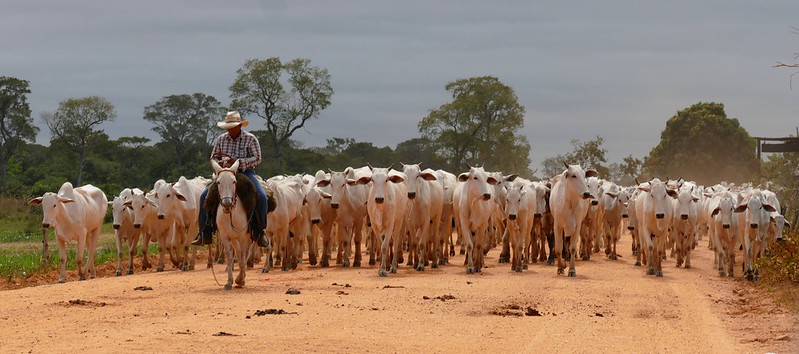
A herd of Brahman cattle in 2016 in Mato Grosso, Brazil.
During the social and political upheavals of the 1960s and 1970s the Amazon was envisioned as the nation’s social safety valve, and the military government outlined a plan to relocate 70,000 impoverished families to the Amazon to improve their economic situation.
To facilitate social and economic development, the military government initiated the construction of roads that cut through the forest with little regard for native territorial lands. These include the national Trans-Amazonian highway (BR-230), which runs east-west for 1,400 miles connecting the cities of Marabá, Itaituba, and Porto Velho, and also north-south roads connecting Cuiabá to Santarém and Brasília to Belém.
Road construction accelerated the process of deforestation as access to new territory brought settlers who established land claims and cleared forest to plant crops and raise cattle.
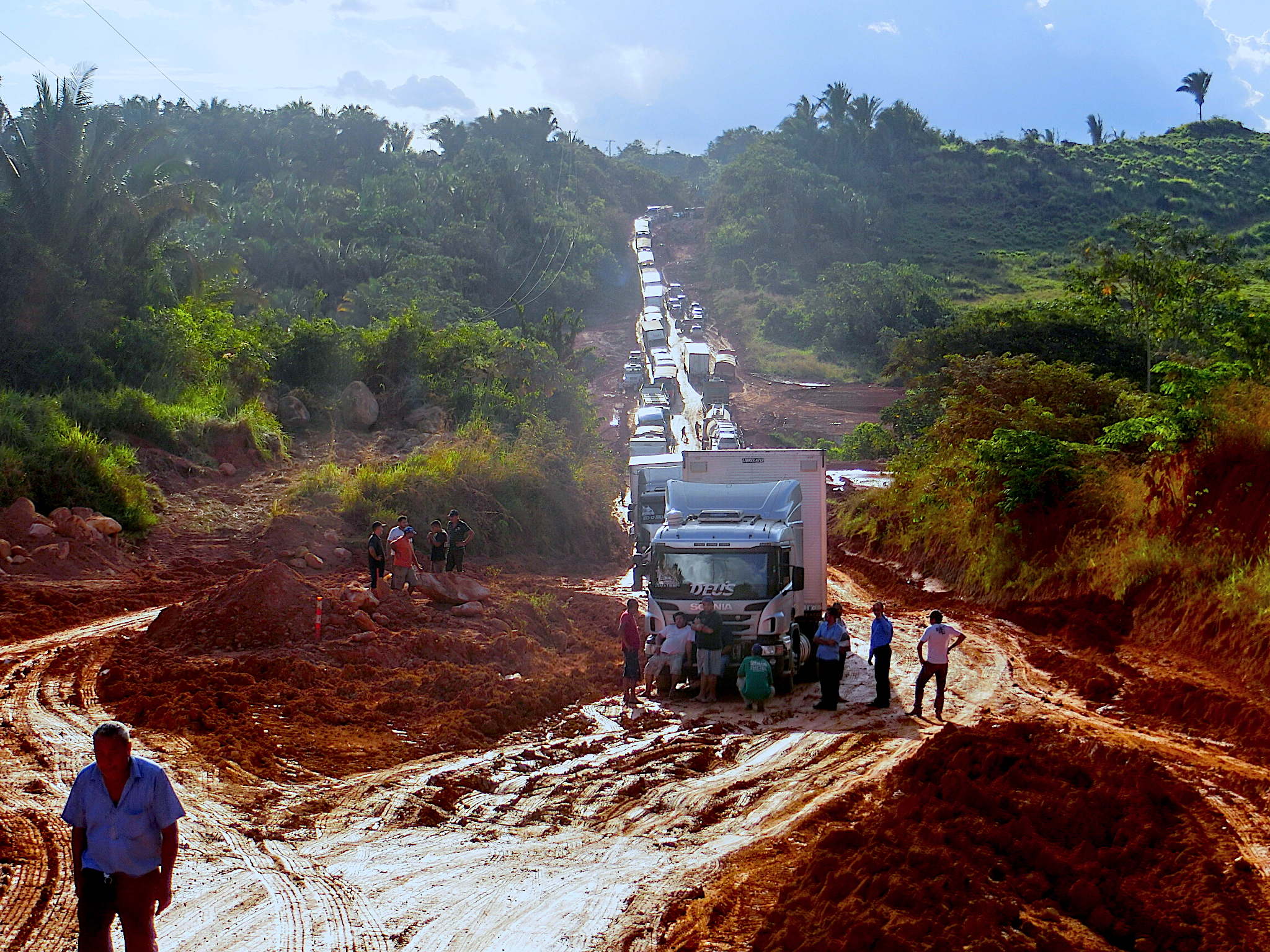
Trans-Amazonian Highway after rain in 2015.
Facing stagnant national economic growth and lower-than-expected numbers of settlers, the military government began to promote “Big Projects” in the region, specifically mining, industrial, and hydroelectric projects, in order to stimulate further growth.
In 1967 American shipping magnate Daniel K. Ludwig purchased a 250,000-acre tract of land on the Jari river and invested some $750 million to produce paper pulp. The operation depended on the cultivation of fast-growing trees to provide wood to process, and a massive pulp mill and wood-fired power plant were constructed. Poor forest management, high management turnover, and difficulty in recruiting and retaining workers led Ludwig to sell the operation to the Brazilian government in 1982 for $280 million.
In 1975 the federal government initiated construction of the Tucuruí hydroelectric project on the Tocantins river in Pará, which began producing power in 1984. It is the world’s fifth largest hydroelectric project, producing 8,370 megawatts of electric power. The dam’s reservoir covers an area approximately the size of Rhode Island; 20,000 people, primarily native Brazilians, were displaced when it filled.

A 2008 aerial view of the Tucuruí Hydroelectric Dam in Pará, Brazil.
Electricity from Tucuruí powers mining operations at nearby Grande Carajás, the largest iron ore mine in the world, today owned by Vale, the world’s largest producer of iron ore. It has been estimated that the iron ore reserves at Carajás can be mined for 500 years, and the site also produces gold, manganese, bauxite, copper, and nickel.
Vale’s operations at Carajás and other locations—including the site of the January 2019 Brumadinho tailings dam disaster in Minas Gerais that killed at least 157 people—have raised concerns about environmental degradation, pollution, public health, and labor law violations.
Mining in particular has brought rapid population growth to the Amazon basin. The discovery of gold at several locations in Pará, Mato Grosso, and Amapá in the 1980s drew hundreds of thousands of miners, including an estimated 100,000 at a single mine, Serra Pelada, in Pará.
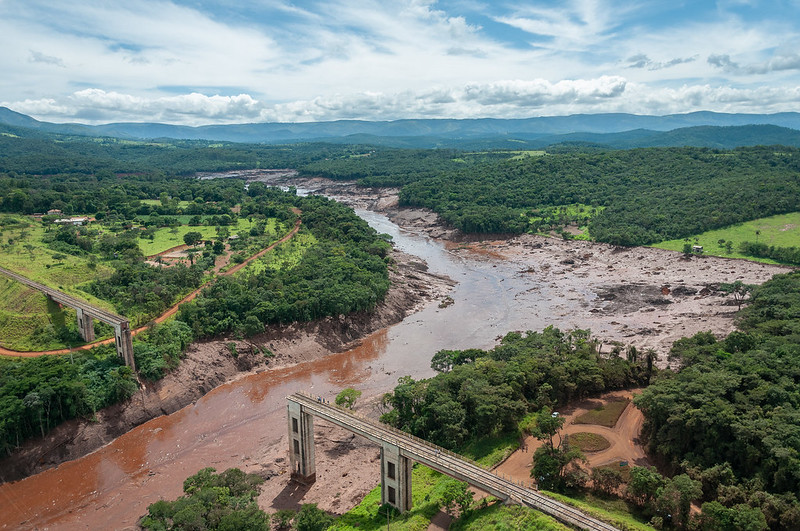
Brumadinho disaster in Minas Gerais, Brazil, in 2019.
In the 1990s it was estimated that some 500,000 miners were working claims across the region. Legal and illegal gold mines, many located in or adjacent to native reserves and national parks, placed additional pressure on land. According to government and United Nations figures, deforestation reached a peak in the late 1990s and early 2000s.
The promise of land ownership brought hundreds of thousands of migrants who sought better lives for themselves and their families. Settlement and population growth led to the loss of forest that was converted to pasturage or put under agricultural production. The United Nations’ Food and Agriculture Organization estimated that 90% of the land cleared since 1970 is used for cattle production.
In the 1980s, the human and environmental costs of development projects, as well as global concern about depletion of the ozone layer, the Bhopal disaster, and the Exxon Valdez oil spill, produced international pressure on the Brazilian government to address deforestation.
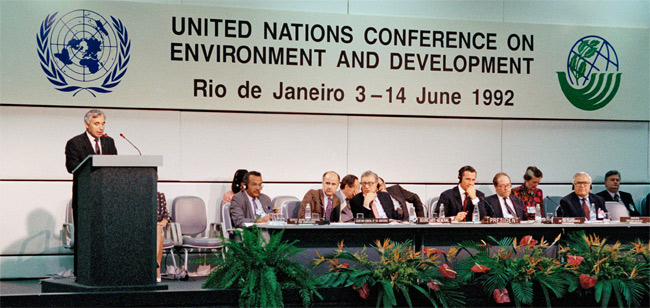
The 1992 United Nations Earth Summit focused on sustainable development.
The Fernando Collor administration, the first civilian government since 1964, in an attempt to gain international favor, agreed to create new indigenous reserves for the Kayapo and Yanomami, started to closely monitor fires in the region, and hosted the 1992 U.N. Earth Summit.
Despite these measures, deforestation continued. In 1995 alone some 29,000 square kilometers of forest were lost, an area equal to the size of Massachusetts. While deforestation rates declined significantly beginning in 2007, they have climbed again under the Bolsonaro administration.
The Uncertain Future of the Amazon
The transformation of the Amazon basin reflects the same patterns of global economic development that have shaped the Western Hemisphere. The 2019 Amazonian fires are the result of centuries of settlement and development in the region. Since the 1930s the Amazon has become both an indicator of Brazilian economic development and a symbol of national pride.
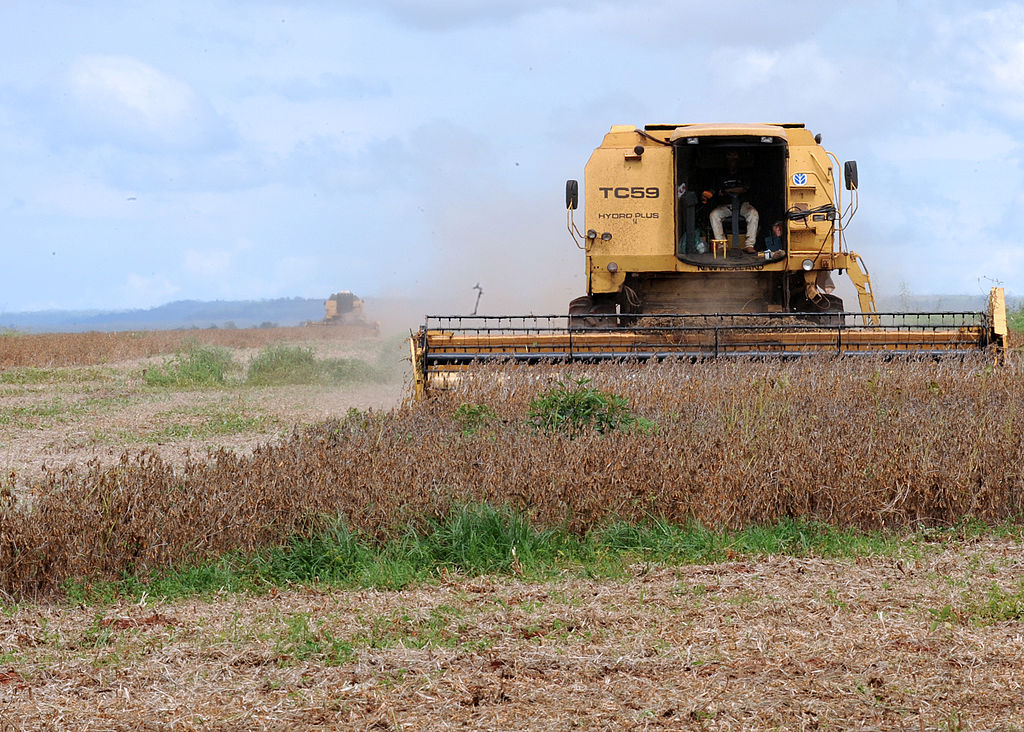
Harvesting soybeans in 2009 in Mato Grosso, Brazil.
There is no national consensus on how to proceed. Polls suggest that Brazilians’ attitudes toward the Amazon differ significantly from the Bolsonaro administration’s, with some 70% dissatisfied with Brazil’s environmental policies. However, environmental issues do not have much political traction in the national legislature.
International economic and political pressure has been applied in an attempt to force the Bolsonaro administration to change course.
H&M, the second largest global clothing retailer, and VFC, the parent company of Timberland, Vans, and North Face, announced temporary bans on purchasing Brazilian leather until it could be determined whether its production caused environmental harm. Some investment managers and companies have halted investments in and deals with Brazil.
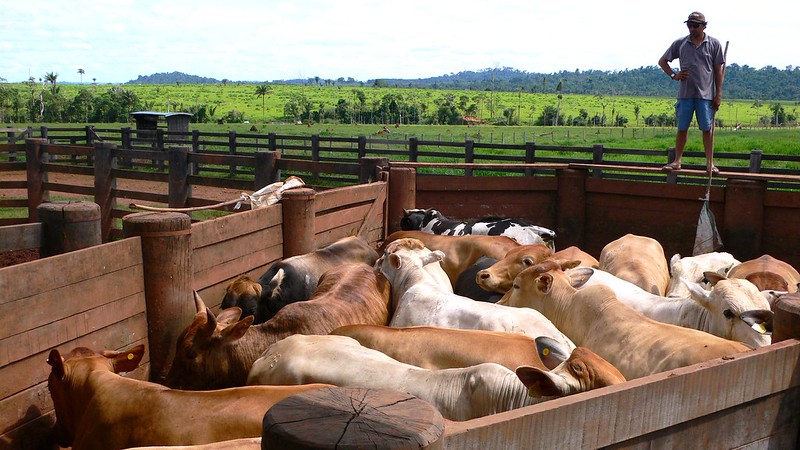
Corralled cattle in the Amazon in 2007.
French President Emmanuel Macron threatened to veto a free trade agreement between the EU and MERCOSUL, a South American common market that includes Argentina, Brazil, Paraguay, and Uruguay over concerns about the Bolsonaro government’s policies in the Amazon, although it is not clear what environmental protections will be included in the final agreement.
The Bolsonaro administration authorized the use of the Brazilian military to assist in fighting the fires. However official statistics indicate that in September there were twice as many fires as in 2018 and the loss of 1,500 square kilometers of forest, a rate of loss not seen in a decade.
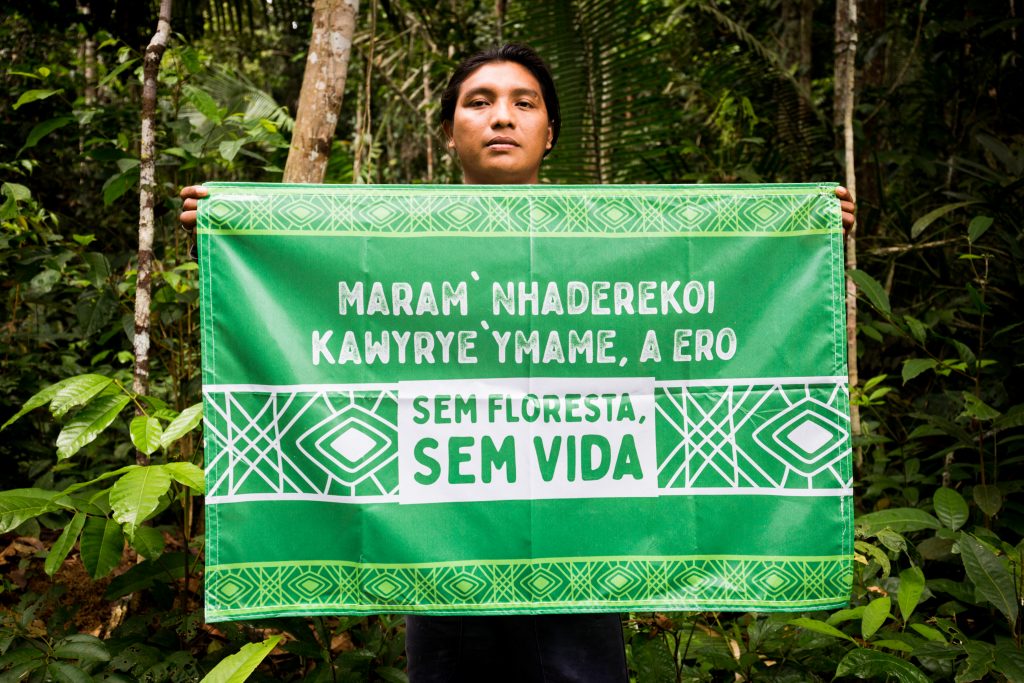
In other words, despite international pressure, deforestation continues unabated. While it remains to be seen whether the Bolsonaro administration will change course, for now the social, economic, and political forces that have transformed the Amazon continue to threaten its future and very survival.
Read and Listen to Origins for more on Brazil: Brazil and Bolsonaro; Brazil’s Elections; A Postcard from Brazil; Brazilian Politics.
And Latin America: Venezuela's Failing State; Colombia and the FARC; Cuba and the U.S. Reengage; Inflation and Argentina; Rethinking Cuba Libre; Global Migration and the Americas; Latin American Drug Trafficking; Puerto Rico and the United States; Honduras; Mexico City; and The Guatemala Inoculation Experiments.
Diacon, Todd A. Stringing Together a Nation: Cândido Mariano da Silva Rondon and the Construction of Modern Brazil, 1906-1930. Durham: Duke University Press, 2004.
Garfield, Seth. In Search of the Amazon: Brazil, The United States, and the Nature of a Region. Durham: Duke University Press, 2013.
Garfield, Seth. The Indigenous Struggle at the Heart of Brazil: State Policy, Frontier Expansion, and the Xavante Indians, 1937-1988. Durham: Duke University Press, 2001.
Grandin, Greg. Fordlandia: The Rise and Fall of Henry Ford’s Forgotten Jungle City. New York: Picador, 2009.
Grann, David. The Lost City of Z: A Tale of Deadly Obsession in the Amazon. New York: Vintage Books, 2005.
Hecht, Susanna and Alexander Cockburn. The Fate of the Forest: Developers, Destroyers, and Defenders of the Amazon, updated ed. Chicago: University of Chicago Press, 2011.
Hemming, John. Red Gold: The Conquest of the Brazilian Indians, 1500-1760. Cambridge: Harvard University Press, 1978.
Lévi-Strauss, Claude. Tristes Tropiques. New York: Atheneum, 1974.
MacMillan, Gordon. At the End of the Rainbow? Gold Land, and People in the Brazilian Amazon. New York: Columbia University Press, 1995.
Revkin, Andrew. The Burning Season: The Murder of Chico Mendes and the Fight for the Amazon Rain Forest. New York: Plume Books, 1994.
Roosevelt, Theodore. Through the Brazilian Wilderness: The Classic Travelogue. New York: Charles Scribner’s Sons, 1925.
Weinstein, Barbara. The Amazon Rubber Boom, 1850-1920. Stanford: Stanford University Press, 1983.

